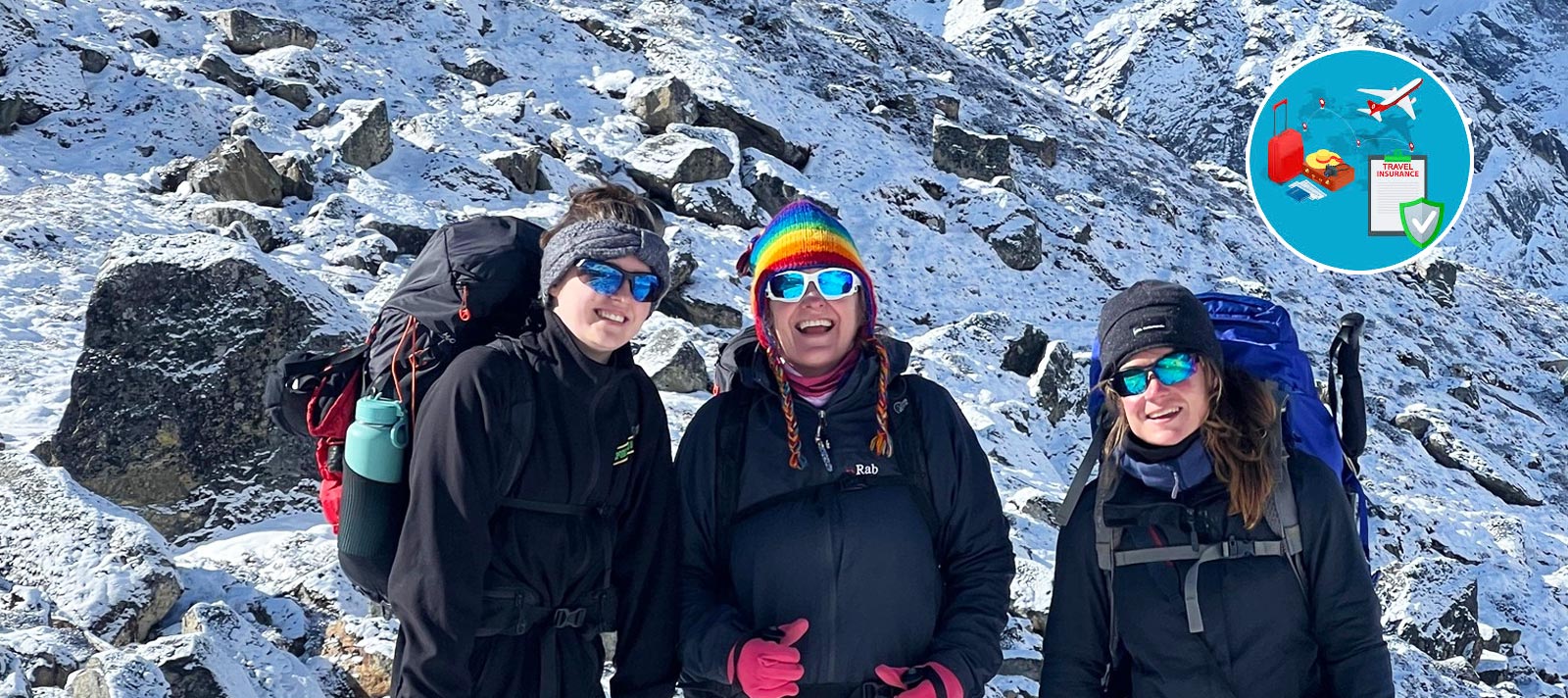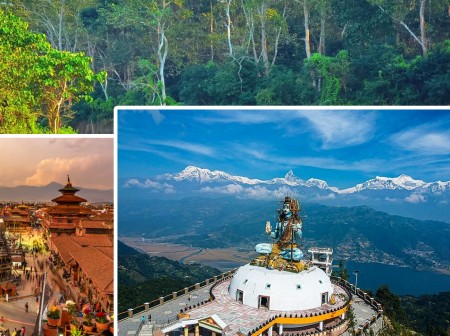
Health & Travel Insurance Nepal Guide
- soleencounters
Visiting Nepal in 2025 offers thrilling trekking, cultural immersion, and stunning Himalayan landscapes. However, remote trails, high-altitude hikes, and unpredictable conditions make health and travel insurance in Nepal 2025 essential. This professional guide from Sole Encounters Trekking helps you choose the right coverage, understand local health risks, and ensure your adventure remains safe and smooth from start to finish.
Table of Contents
Why You Need Health & Travel Insurance in Nepal 2025
Insurance serves as your safety net abroad. Nepal’s terrain includes high-altitude environments like Everest and Annapurna regions, where medical evacuation can cost thousands. Insurance ensures:
-
Coverage for medical emergencies and hospital care
-
Helicopter rescue or evacuation in remote regions
-
Trip cancellation or interruption
-
Lost baggage, delays, or personal liability
For treks in regions like Everest Base Camp, Annapurna Circuit, Upper Mustang, and Manaslu, proper travel insurance is not just advisable—it’s highly recommended.
H2: Key Coverage Types to Look For
H3: Medical & Emergency Evacuation
Ensure your policy covers:
-
Emergency medical treatment (both in Kathmandu hospitals and regional clinics)
-
High-altitude illness treatment (e.g., acute mountain sickness)
-
Emergency helicopter evacuation from mountain trails
H3: Trip Cancellation, Interruption, and Delay
Look for policies that cover:
-
Cancellation due to illness, political unrest, natural disasters, or flight delays
-
Trip interruption if you must return early
-
Compensation for travel delays resulting in additional costs
H3: Baggage and Equipment Coverage
Your gear—like trekking boots, sleeping bags, or personal electronics—is vital. Choose a policy that includes:
-
Loss, theft, or damage of luggage
-
Delayed baggage compensation
H3: Personal Liability and Repatriation
Coverage may also include:
-
Personal liability (if you accidentally damage property or injure others)
-
Repatriation to your home country in extreme situations
H2: How to Choose the Right Insurance for Nepal 2025
H3: Minimum Required Elements
At minimum, your policy should include:
-
Medical coverage of at least USD 100,000
-
Emergency evacuation coverage of USD 200,000 or more
-
Altitude-specific rescue if trekking above 4,000 m
H3: Trekking-Specific Add-ons
Some policies offer optional add-ons or premiums that cover:
-
Trekking up to the summit of Everest Base Camp (~5,364 m)
-
Multi-day itineraries in Annapurna Circuit, Ghorepani Poon Hill, or Manaslu Circuit
-
Extended stays in remote regions like Upper Mustang or Kanchenjunga
H3: Geographic Coverage & Regional Exclusions
Check that Nepal is included—and whether coverage is valid for high-altitude trekking. Avoid policies that exclude “adventure sports” or “helicopter rescue” at altitude.
H3: Policy Duration & Extensions
Ensure your insurance duration matches your travel dates. Many companies allow easy online extensions if you decide to add extra trekking days.
H2: Common Health Risks in Nepal & How Insurance Covers Them
Altitude & High-Altitude Illness
At elevations above 3,000–4,000 m, trekkers may face acute mountain sickness (AMS), high-altitude pulmonary edema (HAPE), or cerebral edema (HACE). Insurance that includes altitude illness treatment and emergency evacuation can make all the difference if symptoms escalate.
Travel-Related Illnesses
Although Kathmandu and major cities have modern facilities, remote trails rely on basic clinics. Common risks:
-
Diarrhea or food-borne illness
-
Respiratory infections
-
Minor injuries like sprains or fractures
Insurance typically covers these if treated at qualified clinics or hospitals.
Accidents and Trekking Injuries
Rugged terrain, steep trails, and river crossings pose risks. Insurance helps with:
-
Emergency rescue or evacuation
-
Hospital stays, diagnostics, surgery for severe injuries
Political Unrest or Natural Disasters
Nepal’s geography brings occasional landslides, monsoon flooding, or infrastructure disruptions. Robust travel insurance helps with trip interruptions, cancellations, or emergency shelter costs.
H2: Local Insights & Tips from Nepal Trekking Experts
-
Buy insurance before arrival: Many international insurers do not issue policies in Nepal. Always secure coverage in advance through reputable providers.
-
Print policy documents: Carry both digital and printed copies. Helicopter rescue operators and helicopter evacuation providers in remote areas often require printed proof.
-
Share policy info with guides: Provide your trekking guide or agency staff with policy details—they can assist if a medical emergency arises.
-
Register emergency contacts: List Sole Encounters Trekking and emergency contacts in your insurance profile for quick assistance.
-
Avoid “risk zones” exclusions: Some providers exclude high-altitude rescue above a certain elevation. Carefully read policy fine print.
-
Seek local providers if already in Nepal: If you arrive in Nepal first, local insurers can arrange plans—but may not cover helicopter rescue from high-altitude regions.
-
Add COVID‑19 coverage if concerned: Although global travel conditions have improved, some providers still offer COVID‑19-related cancellation or medical support as optional add‑ons.
H2: Selecting Providers That Cover Nepal Trekking in 2025
Consider reputable international providers known for Himalayan coverage:
-
World Nomads – well-known for trekking-friendly policies with altitude coverage
-
SafetyWing – flexible coverage for travelers and digital nomads
-
IMG Global – offers high-altitude and emergency evacuation add-ons
When choosing, check:
-
Altitude rescue is included or available as add-on
-
Helicopter evacuation costs are covered
-
Coverage thresholds meet Nepal’s high-cost evacuation reality
H2: When to Buy Insurance and Policy Duration Tips
-
Before Leaving Home Country: Buying insurance earlier often reduces costs and ensures full coverage from day one.
-
Match Policy Term to Itinerary: For example:
-
21-day Annapurna Circuit + Poon Hill trek → buy a 30-day plan
-
14-day Everest Base Camp trek → 20–25 day policy
-
-
Extensions: If your trek is extended due to weather delays, permit issues, or itinerary changes, many insurers allow online extension, sometimes up to three months.
H2: Featured Snippet Style Answer (For SEO Optimization)
What is the best travel insurance for trekking in Nepal in 2025?
The best travel insurance for trekking in Nepal in 2025 includes at least USD 100,000 in medical coverage, USD 200,000+ evacuation, and explicit high-altitude rescue coverage above 4,000 m. It should allow for trip interruption, lost baggage, and clearly list Nepal as covered territory. Providers like World Nomads, SafetyWing, and IMG Global fulfill these criteria.
Conclusion
When trekking or traveling Nepal in 2025, your adventure is safer and more enjoyable with robust health and travel insurance. Proper coverage protects against altitude illness, medical emergencies, evacuation, delays, and lost equipment. At Sole Encounters Trekking, our team ensures you’re fully informed and prepared. Contact us to plan your custom itinerary, get expert recommendations, and let our team help you secure the best insurance option.
For personalized assistance or custom packages, visit our talk to expert page. To learn more about trekking options in Nepal, check out our Destination: Nepal page. For specific region trips like Everest, Annapurna, Manaslu, or Upper Mustang itineraries, explore individual trip pages on our site. Ready to make your trek safe and worry‑free? Reach out via our Contact Us page and let's get you covered for Nepal 2025.
Recent Posts
.jpg)
3rd Jul, 2025
.jpg)
4th Jul, 2025
.jpg)
4th Jul, 2025
.jpg)
7th Jul, 2025
.jpg)
8th Jul, 2025
.jpg)
8th Jul, 2025
.jpg)
8th Jul, 2025

10th Jul, 2025








